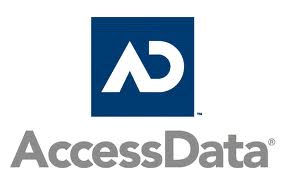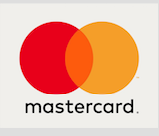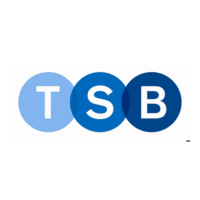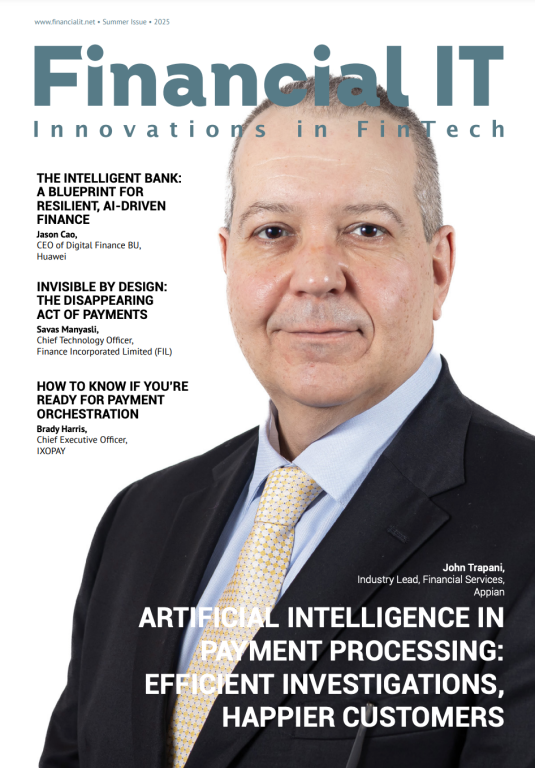Published
- 08:00 am

AccessData Group, a leading provider of integrated digital forensics and e-discovery software, today announced that its AD Lab centralized investigations platform is now the first product in its category to be available to users in a cloud-based environment.
"As data sets in digital forensics investigations continue to grow and teams become more distributed, our customers have been asking us to offer flexible deployment options for using our software," said Victor Limongelli, chief executive officer of AccessData. "In addition to installing AD Lab onto our customers' on-premise servers, we're now able to help them leverage the scalability of the cloud as well. Customers can quickly and easily benefit from AD Lab without making any hardware investments."
AD Lab is a large-scale investigations and processing engine that enables computer forensics labs of all sizes to provide their teams with collaborative analysis, centralized case management and web-based review, thereby dramatically streamlining the investigative process.
The product is now available to customers on Amazon Web Services, a leading cloud platform for the delivery of professional software tools, and can be obtained on AWS Marketplace by clicking here. Customers will be asked to enter their AD Lab license information and will then be granted access to the software. AccessData expects to have AD Lab available on the Microsoft Azure cloud platform this quarter.
AD eDiscovery and Summation
Limongelli also announced that the company is moving forward on an initiative to make its flagship e-discovery software product, AD eDiscovery, available to customers in a cloud-based environment as well. AD eDiscovery better equips corporate IT and corporate legal teams with the needed software platform to efficiently and seamlessly conduct data collection, enterprise search, preservation, litigation holds, data processing, early data assessment and complete legal review.
Meanwhile, the company released new 6.3 versions of both AD eDiscovery and Summation, a web-based e-discovery review solution that supports the post-data collection stages of the e-discovery process and enables secure collaboration, regardless of where any member of the litigation team is located.
Most notably, the AccessData tools are now able to connect with Brainspace, the industry's leading machine learning software that leverages the power of augmented intelligence to accelerate e-discovery review. Brainspace customers can now push data from -- and pull data out of -- AD eDiscovery, in order to gain deeper insights into their data sets.
AD eDiscovery 6.3 and Summation 6.3 also feature enhancements to collect emails containing "illegal" data and migrate those files into the AccessData environment for processing, new data collector support for the latest Enterprise Vault and OneDrive environments, and the ability to create and export searchable PDFs from native files.
"These enhancements bring powerful infrastructure upgrades for improved analytics, as well as greater functionality with email collection and PDF exporting," said Limongelli.
For more information about the new versions of AccessData's e-discovery or digital forensics software products, please click here.
Related News
- 04:00 am

Pioneering Indian tech firm WandX (https://www.wandx.co/), led by CEO Abhinav Ramesh, will launch a token sale on Friday 27 October to fund the building of its groundbreaking platform, which will allow investors to create and trade in derivative products based on crypto-assets.
Expectation around the token sale is high and a pre-sale raised 530 Ether (approximately $150,000) in only 36 hours.
Abhinav Ramesh, 26, who has a background in supply-chain and analytics at Ernst & Young, “Until now, cryptocurrency investors have used decentralised exchanges to buy and sell different cryptocurrencies, in the hope of growing their assets. The difficulty that investors encounter is that, with no centralised bodies regulating the supply of cryptocurrencies, their values can be volatile.
“Investors can only exchange an amount of one currency with an equivalent value of another, which is problematic because it makes it more difficult for them to diversify their portfolio and avoid unnecessary risk.
“That’s where WandX comes in. WandX goes a step further than the decentralised exchanges that enable trade between different tokens, and enables users to create – and trade in – portfolios and exchange-traded funds (ETFs) of tokens in the rapidly-growing ERC20 class.
“These instruments can facilitate the hedging of risk and enable users to own multiple tokens with a single transaction. The plan is that this will not only make investing in cryptocurrencies easier for those who are already involved, but will attract new investors to the market.”
As it is built on the Ethereum blockchain, WandX can use smart contracts to ‘bundle’ together assets.
Unusually for a product holding a token sale, Abhinav’s team – based in Bangalore, India – have already created a prototype platform.
The platform will also contain measuring and analytical functions, so that users can compare the performance of products and strategise accordingly. It will offer a range of derivatives such as futures, options, securitisation of income streams and debt instruments.
The token sale will see the introduction of the WAND token, 55,000 of which will be issued. The WandX team will end the sale when they raise their maximum of 12,500 Ether – approximately $3,720,000 or the 40-day time limit expires.
The WandX team is supported by a broad range of influential advisers and partners, such as financial services expert Raghuttama Rao, blockchain pioneer Bryan Feinberg, management advisor Ramesh Srinivas, data scientist and ICO adviser Nagu Thogiti and fintech entrepreneur Yogesh Gaikwad.
Related News
- 04:00 am

As a frequent visitor to New York, there is no better way for me to get across the city than on the subway. And very soon, there will be no faster way to get on the subway than by tapping my Mastercard contactless card or device on the turnstile. 
New York’s iconic MetroCard has served the city well for almost 30 years – but technology has clearly moved on since it was first introduced.
So I was very excited to hear yesterday that New York’s Metropolitan Transportation Authority (MTA) has asked our long-standing partners Cubic Transportation Systems to implement a new fare payment system across the city’s entire subway (and bus) system. Starting in 2019, the new system will enable riders to tap a contactless payment device to unlock the turnstiles. Customers of Metro-North Railroad and Long Island Rail Road will also be able to merge their tickets into one integrated form of payment.
Having seen the impact of similar programs in cities around the world, notably in my home city London, I can attest that this decision means it is a great day for New York.
Put simply, people will no longer have to wait in line at a ticket machine, fumble for cash, or get stuck behind someone having to swipe their card multiple times. With this new system, people no longer need to pre-pay for rides. They can pay a fare directly just by tapping a contactless payment device – hence the phrase “pay as you go” – and the fare will be debited directly from the underlying account in the background. The technology will also enable new fare policies such as fare capping.
I was fortunate to work closely with Transport for London (TfL) on introducing contactless payments across the city’s Oyster ticketing system in 2014. Introducing this form of fare payment delivered real benefits to riders:
- Londoners could avoid getting caught unaware when their prepaid Oyster account balance ran out – an event which in some parts of the suburbs could mean a long walk of half a mile or more to the nearest reload outlet;
- Visitors to the city could use the contactless payment device they already had to enter and exit the transport system – no need to figure out how & where to get an Oyster card first, nor how to put money onto it before travel;
- And everyone could benefit from a tangible reduction in crowding in stations, as people who previously were forced to queue for ticket machines instead proceeded quickly and directly to the gate-lines;
- Through daily capping with contactless, customers have saved a total of over £123 million. A further £50 million has also been saved in total thanks to weekly capping.
The take-up of contactless payments in London speaks for itself:
- Almost half of all pay-as-you-go journeys on the city’s underground, buses and commuter railway are now paid this way. And this share continues to grow steadily;
- Visitors from more than 100 countries have now used contactless payment cards and mobile devices to make journeys on London’s public transport network;
- Londoners seem increasingly inclined to pay with contactless-enabled mobile devices, which are now making up almost one in ten of all contactless journeys. Apple Pay, Android Pay and Samsung Pay can all be used to tap the Oyster readers, and more than 31 million journeys have been made using mobile phones in London in the last 12 months.
In enabling this simple pay-as-you-go way to pay fares, New York joins other world cities like London, Chicago, Singapore and Sydney that have done the same. The world’s cities are steadily becoming more and more connected – I look forward to a future where all you need to ride on their transport systems is the Mastercard contactless card, phone or wearable that you habitually have on your person, whether you live there or are just visiting.
Related News
- 04:00 am

Global e-commerces will have a new possibility to sell to Brazil's booming e-commerce market, which got to USD 23 billion in 2016 (this number does not include expenses with tourism and travel) and has an expected growth rate of almost 17% for this year, according to Americas Market Intelligence (AMI). Now, these merchants can reach Brazilian customers through a partnership between Google and EBANX, a fintech headquartered in Brazil that offers Latin American local payment methods to global merchants and that allows them to sell like Latin Americans without establishing a local entity.
The new Google Payment API allows Brazilian shoppers to pay for their purchases using any of the credit cards that they have already saved to their Google Account or Android Pay. In addition, they will be able to insert new international or local cards to it, since EBANX is connected to Brazilian local acquirers.
By choosing to pay with Google for their online purchases, customers will manage to complete the transactions without the necessity to inform their card's data all over again. It is a detail that facilitates checkout and helps avoid cart abandonment.
Alongside with e-commerce, Brazilian mobile commerce is also expanding. According to AMI, this market had grown 88% between 2014 and 2015. Taking into account the fact that more than 95% of the smartphones sold between July and September 2016 in Brazil had Android operating system, as reported by the consultancy International Data Corporation (IDC), it is possible to realize the impact that the Google Payment API will have on people's lives in the country. "We are really excited to launch this product with Google in Brazil, offering more payment choices for Brazilian customers and enhancing the user experience with e-commerce merchants, through EBANX's leadership when it comes to Brazilian and other Latin American markets and through the deep reach that paying with Google has”, said the business development manager at EBANX, Andre Allain.
One of the firsts to provide this payment method to its Brazilian customers is Xsolla, the big video game selling company and also a merchant of EBANX. This means that Brazilians that buy from the global e-commerce will be able to pay with Google for its games if they want to.
"Xsolla is very proud to have an opportunity to work with Google, and we are really grateful to our trusted partner EBANX for helping us enter into this relationship. For us, the Google Payment API is an important innovation. It will allow our mobile users to get a new level of convenience with a seamless checkout experience. With a huge amount of data already saved into multiple Google accounts, and with extended Android Pay functionality, this method will find its audience among the big percent of our customers who enjoy paying with stored credentials. Thus, we look forward to implementing the Google Payment API in Brazil, which will totally result in improved conversion and increased sales", said the business development manager at Xsolla, Ekaterina Fadeeva.
Related News
- 06:00 am

Chargebacks911, a leading international dispute mitigation and loss prevention firm (known as The Chargeback Company in Europe), has announced the integration of its comprehensive chargeback management services into continuity commerce platform, LimeLight.
The new partnership will see Chargebacks911’s proprietary technology assisting LimeLight by helping to detect, manage, and fight fraudulent chargebacks, facilitating LimeLight in its mission to provide the most comprehensive business platform for performance marketers in continuity marketing and subscription ecommerce.
Chargebacks cost businesses over $80 billion annually. Above and beyond the cost on an individual transaction basis, chargebacks impact subscription ecommerce merchants significantly, causing automatic cancellation of subscriptions, increasing customer churn, adding risk to Merchant IDs and possibly raising red flags with banks.
Integrating Chargebacks911’s solution into LimeLight provides a way for LimeLight users to instantly improve their bottom line, while capturing further data to provide a more comprehensive picture of merchants’ marketing and ecommerce. Fewer chargebacks yield more successful transactions, leading to more profitability for merchants.
Gary Cardone, co-founder and CEO of Chargebacks911, said: “Chargebacks remain a significant barrier to growth for online businesses, particularly in the affiliate marketing and subscription-based ecommerce industries. We’re very happy to further expand our partnership with LimeLight, helping protect and defend their entire global merchant-client base from ecommerce risks, including first and second-party fraud. Our fully managed chargeback service is used by global merchants across hundreds of PSPs and acquirers, in dozens of verticals around the world, and thus created a natural fit between the two firms.”
LimeLight CEO, Brian Bogosian added: “LimeLight processes billions of dollars of ecommerce transactions, so we know that fraud and chargebacks are a big problem for ecommerce merchants. Chargebacks911 understands how chargebacks impact our customers’ bottom line and brings a depth of unparalleled expertise.
“Integrating Chargebacks911 features into our platform provides our clients with a seamless experience and deep analytics and reporting features they have come to expect from LimeLight. We expect to add other services and technology to provide an even more comprehensive solution and even greater choice for our customers.”
Related News

Breana Patel
Risk &Regulatory Advisory at Bonova Advisory
The cost of adhering to AML requirements for financial institutions is growing at an alarmingly rapid pace as employees race to stay abreast of the complex and dynamic regulatory landscape. see more
- 01:00 am

Uber is getting into the credit card business. Announced today in partnership with Barclays and Visa at the Money2020 conference in Las Vegas, the new card gives Uber yet another point of access to incredibly valuable customer information and marks another front in its campaign to assume a larger role in online and offline commerce.
Not content with just having a record of some of the comings and goings of the at least 10 million people that use the company’s ride-hailing service every day, Uber will now get a record of some of those folks’ daily purchases through the new card.
Applying for the card is easy. Starting November 2, Uber will give users the option to get the card right in its app, and will populate all of the information they have on file for their customers into the application.
Folks also can apply for the card online.
After a few minutes, an applicant can get a verdict on their creditworthiness and then… Presto! The card is automatically available for use for Uber rides and UberEats purchases and a physical card will show up in the mail within a week or so.
The no-fee card offers a bonus of $100 after spending $500 on purchases within the first 90 days, and has other perks, like 4 percent back on restaurants, take-out and bar purchases; 3 percent back on airfare, hotels and Airbnb or other short-stay rentals; 2 percent back on online purchases; and 1 percent back on everything else.
The new card also gives users a $50 credit for online subscriptions (after spending $5,000 on the card per-year), phone insurance of up to $600 if someone uses the card to pay their monthly phone bill; and exclusive invites to events for card members.
To unpack that a bit, in exchange for fronting the cash and getting information about the $5,000+ worth of stuff you’ve bought, Uber will hook you up with $50. And the company’s card will also insure your phone once it has information on your carrier and what you’re spending money on through that carrier.
That’s an almost Amazonian level of information Uber could get about its customers. But, David Richter told me the company would not be selling to third parties any of the data it collects.
Folks can also track and redeem points for Uber credits, cash back and gift cards.
The app’s integration within Uber looks beautiful, and it’s a clever way to capture all that valuable data… If you’ve already given up on the notion that data is any way private or not a commodity, then the card is probably not a bad bet… the perks seem good.
It’s just… Uber has had issues with privacy in the past, and that might be something that should give consumers pause. For one, Uber built out a God-mode to let employees check the comings and goings of users with little to no restrictions or transparency. The company also built a feature that tracked user locations once they’d left a vehicle.
The card will come with annual percentage rates of 15.99 percent, 21.74 percent and 24.74 percent based on an applicant’s credit worthiness… and there’s no upper limit on credit lines, according to a Barclays spokeswoman.
This push into payments comes as the battle for customized shopping experiences for consumers heats up. Amazon already has so much data about what its customers are doing that it can offer a compelling argument to be the main (potentially only) retail outlet for a consumer.
Where Amazon runs into limitations is in the physical world with actual restaurants and other grocery stores. With its new credit card, Uber could make a compelling proposition for companies that want to find a way to offset the Amazonian monolith. By getting all that payment information, Uber can begin pairing with merchants to offer customized offerings, paid off with an Uber card.
Also worth mentioning is that this push into credit is the opposite path that Uber’s big emerging markets rivals have taken with their own payment features. Southeast Asian ride-hailing platform Grab bought Kudo earlier this year as a way to get its customers access to basic digital financial services, and Ola built out a standalone app for the same reason. It’s a different path, but same goal to be more relevant and “top of mind” for users.
In the U.S. this gambit is a new front in the war for customer loyalty and dollars. Your move, big e-commerce giants.
Related News
- 06:00 am

Avaloq is proud to announce that the community of banks relying on its outsourcing solutions has grown further with the going live of Edmond de Rothschild (Suisse) S.A in Switzerland. Avaloq has successfully implemented the Avaloq Banking Suite for the Swiss private banking operations at the family-controlled financial group focused on private banking and asset management.
Edmond de Rothschild (Suisse) S.A. in Switzerland has successfully gone live with the Avaloq Banking Suite. Headquartered in Geneva, Switzerland, with offices, branches and subsidiaries throughout the world, Edmond de Rothschild (Suisse) S.A. is specialised in private banking and asset management. In addition to its core business, the company is active in corporate finance, private equity and investment fund administration.
Following the successful going live, Avaloq now provides Edmond de Rothschild (Suisse) S.A. with a comprehensive set of outsourcing services. These services include the implementation and maintenance of the Avaloq Banking Suite, a digital front-to-back platform, application management and IT infrastructure and operation. It also provides a new, centralised operating model based on a homogenous IT platform with the same processes across all regions. This new model enables improved support of all of the bank’s branches in Switzerland. In 2018, additional entities of Edmond de Rothschild (Suisse) S.A. in Monaco and Luxembourg will be migrated to the same setup based on the Avaloq Banking Suite.
Ariane de Rothschild, President of the Executive Committee of the Edmond de Rothschild Group, explains: “The delivery of our new IT platform, as planned and on time, is key in allowing us to innovate and fulfil our digital ambitions to provide outstanding solutions that meet our clients’ evolving needs.”
“We are delighted that Edmond de Rothschild (Suisse) S.A. in Switzerland has gone live with the Avaloq Banking Suite managed by our Swiss BPO centre,” adds Markus Gröninger, Avaloq’s Group Chief Global Processing Network. “Thanks to improved efficiency and effectiveness, we will help the bank to reduce costs and free up resources, which will provide more operational leeway to focus on business development and existing customers.”
Related News
- 09:00 am

Minium’s solution, based on Cinnober’s award winning technology for exchanges and clearinghouses, will enable banks and brokers to offer modern and efficient real-time post-trade services to their customers.
“Minium offers a unique high availability real-time core engine that powers advanced cross-asset risk and post-trade modules: this combination will support our customers in their transformation away from the constraints of today’s legacy solutions”, says Patrick Tessier, COO of Minium. “This new subsidiary will take risk management and post-trade services to the next level, by providing true exception based real-time services supported by today’s scalable technology”.
Minium offers a flexible, cross asset and cross currency open architecture where clients can choose between a fully integrated solution or individual components based on their needs and preferences. The solution is a real-time platform enabling banks and brokers to manage their clients’ risk, collateral, and margin requirements with all decisions based on live data. It gives users a new ability to focus solely on smart data analysis, enhanced client service and fast decision making rather than searching for and reconciling data across fragmented and slow legacy systems. As a completely cloud capable solution, it comes without the disruptive upgrade cycles and large maintenance budgets of old platforms. In addition, Minium’s solution is designed to be accessible on the go via smartphones and tablets to support modern working practices.
“With its real-time technology, Cinnober has revolutionised the highly regulated world of clearinghouses enabling them to scale up their post-trade processing capabilities and to perform complex cross-asset risk calculations so they can mitigate risk by calling their clearing members for margins in real-time”, says Veronica Augustsson, CEO of Minium’s parent company Cinnober. “It is now time that these kinds of cutting edge capabilities are made available to banks and brokers to help them grow their business whilst optimising their capital and funding resources”.
Minium enables real-time trading and clearing, and works as an open ecosystem to offer clients a menu of best-of-breed components that work together in a single cohesive manner. The solution identifies, delivers and future-proofs clients’ individual requirements.
Related News
- 04:00 am

Today, 26 October 2017, TSB announces its financial results for the nine months to 30 September 2017.
Highlights include:
TSB provided £5.8 billion of new mortgage advances to help more than 38,000 homeowners to get a better mortgage deal or buy a new home in the nine month period.
Customers continue to trust TSB with their money - with around 1,000 customers a day opening a TSB bank account, helping boost deposit balances to over £30 billion.
Customers continue to recommend TSB to friends and family with TSB’s Net Promoter Score (NPS)[1] at +24 for the nine month period.
TSB is set to become the first major bank in the UK to have designed and built a new state-of-the-art banking platform for the digital age.
TSB customers are the first in Europe to use iris scanning security features to access their accounts with TSB’s mobile banking app.
Further highlights include:
TSB advanced £5.8 billion in new mortgage loans in the first nine months of 2017, up 17.5% on the same period last year from £4.9 billion.
Franchise customer lending (excluding the Whistletree portfolio) grew to £28.6 billion, up 18.8% (£4.5 billon) year-on-year from £24.1 billion.
Franchise customer lending (including the Whistletree portfolio) grew to £30.8 billion, up 15.5% (£4.1 billion) year-on-year from £26.7 billion.
6.4%[2] of all customers switching banks or opening a new account in the past 12 months chose TSB - in line with our long-term target.
Customer deposits grew to £30.3 billion, up 4.5% (£1.3 billion) year-on-year from £29.0 billion.
Management profit before tax of £147.3 million was 1.3% lower (£2.0 million) year-on-year.
As expected, operating costs increased 18.2% year-on-year to £612.4 million, driven primarily by the £90.5 million increase in outsourcing fees paid to Lloyds Banking Group in the first nine months of 2017.
As reported at H1 2017, the Mortgage Enhancement portfolio - a £3.4 billion residential mortgage loan book created in February 2014 to enhance TSB’s profitability - was returned early, in June 2017. This accelerated the delivery of profit to TSB in 2017, generating £61.7 million management profit before tax in the first nine months of 2017 compared with £36.1 million in the same period last year - an increase of £25.6 million.
Excluding the increase in outsourcing fees and the effect of the early return of the Mortgage Enhancement, management profit before tax grew £62.9 million (42.1%) year-on-year from £149.3 million.
Statutory profit before tax fell to £134.2 million, down 17.0% (£27.4m) year-on-year from £161.6 million due to the non-recurring gain from the sale of our interest in Visa Europe (£32.5 million) which was recognised in June 2016.
TSB’s liquidity is robust while our capital position remains one of the strongest of the UK banks with a common equity tier one ratio of 18.9%.
Paul Pester, TSB Chief Executive Officer, commented: “When we launched TSB in 2013, we set out to break the stranglehold of the big five banks and bring a different sort of banking to the UK. Four years on, our latest set of results show TSB has cemented its positon as Britain’s challenger bank and that a bank focused on serving local communities really can thrive.
“Our high-tech transformation continues with TSB becoming the first major bank in the UK to have designed and built a new banking platform for the digital age. Customers are already starting to see the benefits as they are the first in Europe to use iris scanning security with TSB’s mobile banking app - accessing their accounts simply by glancing at their phones. And I’m also delighted to announce that TSB customers will be amongst the first to use Apple’s new facial recognition technology to log in to their TSB account.
“Looking forward, our new, state-of-the-art banking platform will be transformational as we continue on our mission to bring more competition to UK banking - both for consumers and local businesses. The new platform will position TSB well to compete for one of the grants from the Capability and Innovation Fund recently announced by the UK Government. Breaking the stranglehold of the big five banks remains top of our agenda and we’ll continue to work closely with the Government, policymakers and regulators in an attempt to bring the full force of competition to bear on the UK banking market - and ultimately make banking better for all UK consumers.”









